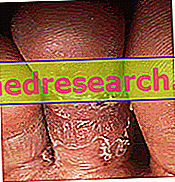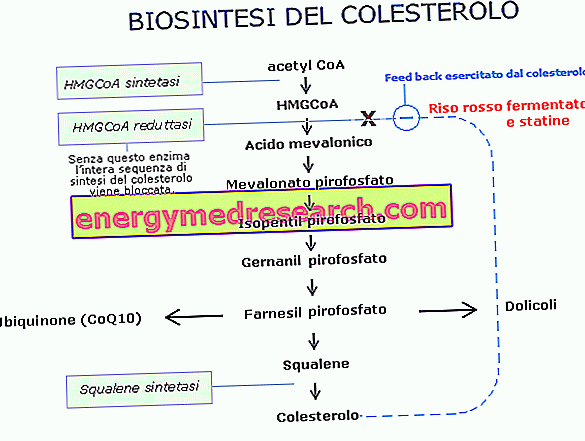Ringworm of the foot

Mycosis of the foot, as the name implies, frequently affects athletes and especially those who attend public sports centers with a hot and humid climate (swimming pools, gyms, showers, etc.). The transmission of the disease takes place by contact thanks to small fragments of skin that detach from the patient and are dispersed in the environment. This infection can be direct but also indirect, for example by contact with showers, platforms, floors or other objects used by people affected by mycosis.
Athlete's foot is a pathology widespread all over the world and is found more frequently in adults, in the elderly and in male subjects.
Causes and Predisposing Factors
Athlete's foot most easily affects debilitated individuals whose immune defenses are unprepared to fight infection. Also some pathologies like AIDS, diabetes, circulatory dysfunctions and dermatitis, can favor the onset of the disease.
In addition to these endogenous factors, other exogenous or external factors are added, linked to environmental conditions. In fact, the micro-organisms that cause athlete's foot proliferate in warm and humid environments, nesting in closed places like sports shoes. For this reason the risk of infection increases considerably if one or more of the following risk factors are present:
- Weakening of the immune system
- Genetic factors (there is probably a genetic predisposition of the subject to the infection)
- Bad sweating
- Moisture accumulation (wet socks or shoes)
- Habit in walking barefoot in public places
- Summer season and warm-humid environments
- Inadequate footwear and stockings (non-breathable synthetic materials)
- Tight shoes
Symptoms
To learn more: Athlete's Foot Symptoms
There are many symptoms of athlete's foot. In the initial stages the infection affects the area between the toes (usually between the third and fourth toes or between the fourth and fifth toes) and then it can be extended to the plant to the back and to the nails with a tendency to chronicity. Favored by heat and humidity due to excessive sweating, the micro-organisms responsible for the infection undermine the superficial layers of the epidermis, giving rise to the characteristic symptoms of the disease:
- erythema, red and itchy skin
- skin flaking, especially between the toes and the sole of the foot
- skin thickening
- formation of blisters with water content more frequently localized on the sole of the foot and on the lateral edges of the fingers
- appearance of skin cracks
- smelly feet
- more or less intense itching
- thicker nails with a twisted appearance and a tendency to weaken until they tear and lose their natural color
If the disease is not treated, bacterial cuts and superinfections can occur. These microorganisms feed on keratin, a substance that covers and protects not only the skin but also nails and hair. By attacking the keratin that forms the stratum corneum (external) of the skin, the fungi responsible for athlete's foot thus open the way to other micro-organisms, causing deep infection.
Prevention
Since reinfections are possible after the healing of the disease it is a good rule that the primary prevention standards we will see become part of the subject's normal hygiene habits.
- Use breathable footwear in light colors (breathable upper)
- Daily hygiene of the feet taking care to dry the interdigital spaces well and to remove any macerated layers
- Change stockings regularly and wash them in warm water
- Allow the shoes to dry after use
- Use socks in natural fabric (cotton, thread, etc.)
- Apply antifungal creams in the foot, in the socks and in the shoe
- Do not walk barefoot or use other people's footwear
- Avoid tight shoes
- Carefully disinfect the floors if you have a public sports center
- Always use slippers or sandals in public toilets, changing rooms or showers
If you are struck by fungal infections, you should avoid going to public swimming pools to avoid transmitting the infection to other individuals.
Treatment
To learn more: Tinea Pedis - Drugs for the treatment of Ringworm of the Foot
To heal from athlete's foot there are specific treatments based on antifungal drugs both for topical use (ointments, sprays, powders, ointments etc.), and systemic (by mouth).
The former, with rare exceptions, can be purchased without a prescription and are indicated in case of superficial infections without complications.
If this treatment fails, relapses occur or the infection is particularly extensive, the treatment is taken by mouth, certainly more effective (healing within one to two weeks) but not without side effects such as nausea, vomiting and headache.
Even topical treatments can in some cases cause local irritation and hypersensitivity reactions to their components. When using these products it is good to respect some rules to promote healing:
- carefully wash and dry the area to be treated
- prefer creams in case of macerated leather by applying small amounts until the drug is completely absorbed
- to avoid relapses, especially in the case of recurrence of symptoms, it is good to apply antifungal powders to shoes and socks
- avoid scratching the affected area excessively as this may delay healing
- topical therapy requires quite long healing times (even some months) and it is good to prolong the treatment for at least a week after complete recovery
- ask your GP or pharmacist for advice before reaching hasty diagnoses
In any case, if the symptoms do not go away after a couple of weeks of topical treatment, it is advisable to consult a doctor, both to confirm the diagnosis and to avoid the prolongation of the treatments that are necessary with topical remedies.
Finally, natural remedies include thyme, lavender, propolis and echinacea, which contain valuable active ingredients with antiseptic, disinfectant and purifying action.



